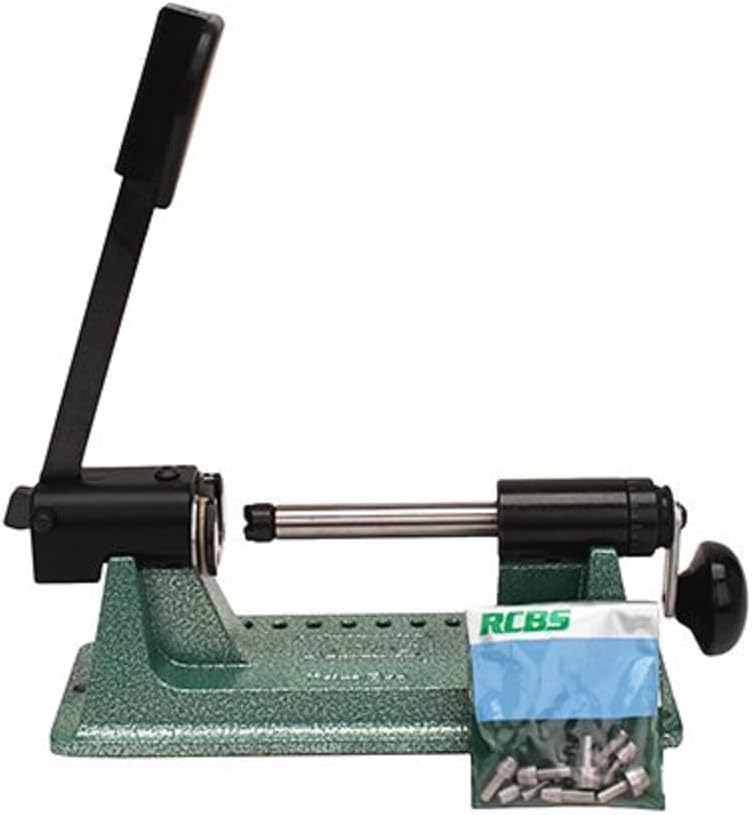For beginning reloaders, buying a starter reloading kit is strongly recommended. These reloading starter kits are available from a number of different companies and contain all the equipment you need to start reloading. They include a press, powder scale, powder measure, priming tools, and case trimming tools. Reloading kits offer the right tools at a discounted price compared to buying the items separately. These kits come in all shapes and sizes but have one priority in common……to get you reloading!
The Lee reloading kit is the most economical kit for a beginner to get. The single stage Lee 50th anniversary Challenger reloading kits are approximately 150 dollars and are perfect for a person who wants to make a small investment. This route is good for a person unsure about reloading. The rcbs reloading kit (single stage) comes in two different packages, the partner kit which does not include a powder measure (200-250 dollars), and the rock chucker supreme master reloading kit which does include a powder measure (350-400 dollars). The hornady reloading kit comes in a single stage classic kit and deluxe kit. The classic kit is 300-400 dollars while the deluxe kit is 500-550 and includes everything the classic kit has plus a bullet puller, case length gauge, die bushings and shell holders. Any one of these single stage reloading kits is perfect for beginning reloaders, however, progressive presses are also available as a starter kit.
A progressive reloading press kit is a good choice for a beginning reloader whom wants to reload pistol calibers. This style of press was designed to be used with pistol calibers to maximize efficiency. These kits are significantly more expensive but can offer unmatched production in a little amount of time. Progressive press kits come in many different forms, a basic kit with no dies and a kit specific for a particular caliber. For example, the Lee Pro 1000 kits are available as a 9mm reloading kit, which will include 9mm dies, shell holders, and priming tools. They also come as 45 acp kits, 38 speacial kits,44 mag kits, etc. Reloading kits are designed to use dies made by the same company as the press. For example, Lee progressive presses use lee dies and the Hornady Lock-n-Load progressive press kit will use hornady dies. Progressive presses are perfect for beginners as well as veteran reloaders.
The question that is often heard in the reloading community is “what is the best reloading kit?”. The best reloading kit is the one that best suits your needs. The best reloading kit is the one that falls within your budget. The best reloading kit can possibly be the one that your neighbor has. Or the one you saw on sale at the store. If you don’t like the color green, stay away from RCBS products. If you don’t like red, stay away from Lee and Hornady products. If you don’t like blue, stay away from Dillon products. Bottom line, these products are all designed to save you money in shooting sports.






